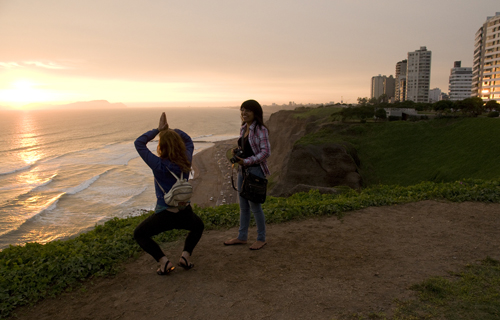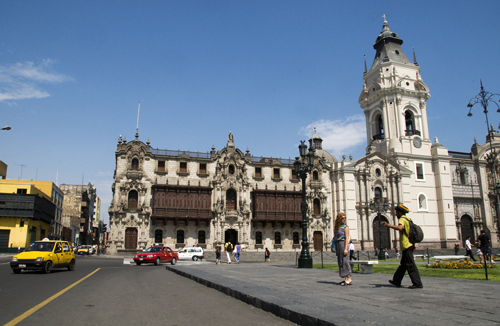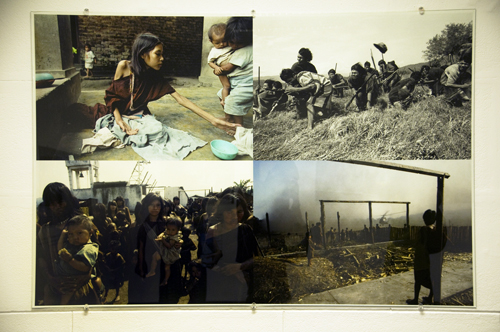The post Lima: It’s Not As Gray As They Say appeared first on The Expeditioner Travel Site.
]]>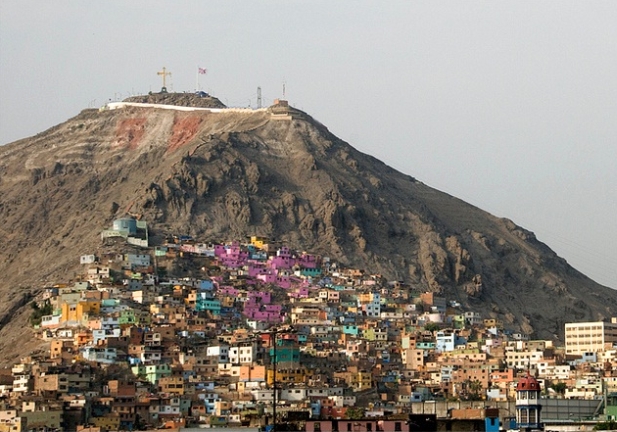
Pan-American Transmissions: Part 9
“Pan-American Transmissions” is a travel series from Special Contributor Diego Cupolo as he travels south from Nicaragua to Argentina. He has few plans, a $10-a-day budget and one flute-playing gypsy companion. Check back as new dispatches are posted from the road.
“Don’t go, it’s ugly. Nothing but gray buildings. One big traffic jam. Avoid Lima at all costs.” This was the advice Ania and I received from multiple backpackers as we made our way south through Peru.
I would normally recommend listening to wisdom from the road, but in this case, it was flat-out wrong. Ania and I found the capital city to be filled with colorful colonial architecture, vibrant street markets, nightlife and a respectable museum and arts culture. In Lima, like any big city, you simply have to be in the right places.
One of them is Barranco. For about two weeks, Ania and I settled down in this seaside surfer-bohemian neighborhood known for its laid-back bars and clubs. We stayed in a hostel without showers or electricity and still passed a good time. (I’ll explain in a few paragraphs).
For about two weeks, we were in the city on a special mission. Ania and I spent our time bouncing around like pinballs between different government buildings, trying to get interviews for a series of articles we were writing on one of the country’s biggest a gold mining controversies.
It was hard work, but in our downtime, we were constantly surprised by the city’s chaotic charm and its beautiful coastline cliffs. No one on the road told us we could watch the sun set into the ocean from the cliffs in Miraflores, and it’s probably because the other travelers never stopped in Lima — they only passed through it in bus.
Sure, Lima isn’t set in the pristine Sacred Valley like Cuzco, and it’s often overlooked by people itching to see Machu Picchu, but if you like big-city movement and you’re looking for Peruvian culture that isn’t based on selling llama sweaters, Lima is well worth a visit.
The Way to Doña Selvia’s
Our strange and journalistically productive stay began with Wayrary, a traveling merchant from the Peruvian Amazon. He got his start selling knife sharpeners in the streets and worked his way up to selling jewelry and metalwork.
We met this dreadlocked fellow in Barranco while looking for a place to stay and he brought us to Doña Selvia’s house. Doña Selvia was 54, but she looked about 74 and needed crutches to walk. She never planned on running one of Lima’s cheapest, crummiest hostels, but she had been neglecting her utility bills and needed cash.
The place was unique. Doña Selvia’s 86-year-old mother slept in the grapevine courtyard, a family of mice lived under the gas range, and Ania and I slept on old cots in a hallway full of dusty pots, pans and Jesus paintings. It was basically urban camping since none of the utilities worked, but we paid $1.50 a night and that was much easier to handle than the $15-$25 hostel rates in the rest of the city — especially when compared to the popular Miraflores backpacker’s hostels.
Regardless of the conditions, Doña Selvia was probably the happiest person we met on our journey and Ania and I settled in among a crowd of street merchants, magicians and jugglers. They were great people. Especially Wayrary, who had been living in Lima on and off over the last 10 years. He was full of Lima knowledge and would show us around the city when we weren’t hunting down Peru’s evasive government elite.
Exploring the City; Exploring the Galleries
In Lima, the avenues are so wide they seem to be made for cargo boats, not cars, and city block can be so large they can make a person feel worthless. While walking around the center, it’s easy to see Spanish colonizers were tired of their overcrowded cities back in Europe and they took the opportunity to really stretch out in the new space of the “New World.”
Ania and I stood in Plaza de Armas and listened as Wayrary talked about Lima’s golden colonial days. “Golden,” as in Inca gold. The city made its early fortunes shipping precious metals to Europe and became a hub of wealth for the Spanish Empire. Lima became a place reserved for the ultra-elite of the colonial times and eventually became the first city to have electricity in South America.
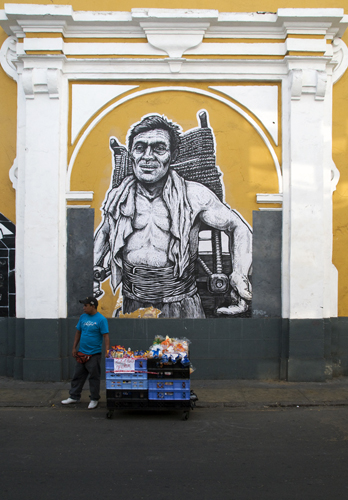
Of course, much has changed as slums now cover the majority of the dusty mountains around the city, but between the grandiose colonial architecture and the abundance of fine-art institutions, it’s not hard to find remnants of Lima’s “golden” days in the city center.
Ania, Wayrary and I paced slowly and silently through a multitude of galleries and museums and were impressed with the exhibits, which seemed to favor contemporary photography above other art forms at the time of our visit. There were street shots of stylish Lima residents from the 1960’s, photo essays on campesinos digging wells in the Andes, and most striking of all, there was a large exhibit on the history of political violence in Peru.
Ania and I stood coldly in front of war images as Wayrary explained the practices of Sendero Luminoso (Shining Path), a Maoist guerrilla organization in Peru’s highlands. It wasn’t common practice, but some Sendero soldiers were known to imprison women in secluded villages and force them to produce large numbers of children to supplement the group’s military forces. Those who resisted were not fed until they complied or faced death by starvation.
“The only difference between these women and me is that I was born in Canada,” Ania said as we left the gallery. At the end of of the day, we headed for the warmth and the colors of the Mercado Central to shake off the heavy mood and listened as Wayrary gave us insight into some of the national dilemmas:
“When we try to understand ourselves as Peruvians, we only get confused,” he said. “We look at our past and see ancient empires and the Incas and realize we have nothing to do with them. Then, we look at the future and see Europe, Canada and the United States, and realize we have nothing to do with them either. Our present state of being is without roots and, because of that, we lack a natural direction for our future. We are a people lost in a the middle.”
Leaving Lima
In the process of conducting interviews with government officials, Ania and I did a few loops around the entire metropolitan area of Lima. There was a lot to explore and it looked worthwhile, but we were too busy transcribing, translating, and transliterating to see it all.
Every evening we took a table at the Barranco Starbucks and used the free Wi-Fi connection to do research and send updates to our editors. We never bought a single coffee and felt the thrill of adventure as the upper-class women of Lima sat around us, chit-chatting and eating muffins with forks and knives.
Eventually, we got the information we needed and submitted our articles on the widely protested Conga gold mine project. Our mission had been accomplished.
In the time we stayed at Doña Selvia’s, Ania and I managed get an upgrade from our hallway cots to one of the few rooms in the house. Though we showered with buckets and cooked with flashlights, it was probably the most pleasant “hostel” we found since Panama City and we were sad to go.
Our last night, Ania bought tofu in Lima’s Chinatown and cooked dinner for everyone. We gave Doña Selvia a plate and she was so happy that she said she’d “never forget about the time a Canadian cooked me Chinese soy cheese,” and then started singing while she cleaned the kitchen in pitch black darkness. For some reason, she always cleaned in the dark.
We got back on the road in the morning, this time heading for Cuzco and then Bolivia. I don’t know if I would recommend Doña Selvia’s house to all travelers, but if you find yourself in Lima, have low standards and need a cheap place to stay, go to Barranco and ask a street vender for the address. Everyone knows Doña Selvia.
Coming up next from Pan-American Transmissions: Into the Amazon: Bolivia’s Gateway to the Jungle
By Diego Cupolo

About the Author
 Diego Cupolo is a freelance photojournalist currently on the road to Tierra del Fuego. Most recently he served as Associate Editor for BushwickBK.com, an online newspaper in Brooklyn, and his work has appeared in The New Yorker, The Atlantic, The Star-Ledger, The Australian Times, Discover Magazine and many other publications. View more of his work at DiegoCupolo.com.
Diego Cupolo is a freelance photojournalist currently on the road to Tierra del Fuego. Most recently he served as Associate Editor for BushwickBK.com, an online newspaper in Brooklyn, and his work has appeared in The New Yorker, The Atlantic, The Star-Ledger, The Australian Times, Discover Magazine and many other publications. View more of his work at DiegoCupolo.com.
The post Lima: It’s Not As Gray As They Say appeared first on The Expeditioner Travel Site.
]]>The post Video: Out To Lunch For Ceviche In Lima appeared first on The Expeditioner Travel Site.
]]>Wouldn’t it be great if every meal you had while traveling was with a knowledgeable chef, there at your side, describing the food and making recommendations for what’s good in the ‘hood? Here’s your chance to experience what that would be like in Lima, Peru, where the order of the day is, of course, ceviche, followed by a trip to the fish market to plan your next meal.
Highlight: Have you ever seen anything prettier than the dishes at 3:17?
The post Video: Out To Lunch For Ceviche In Lima appeared first on The Expeditioner Travel Site.
]]>The post A Sustainable Surfing Shangri-la In Peru appeared first on The Expeditioner Travel Site.
]]>
Let’s face it; Peru could be my very own Shangri-la without all these perks. Then you mix in one of the longest breaking left hand waves in the world, a chic resort that caters to local projects of sustainability, and it becomes pretty close to anyone’s ideal.
Machapu Adventures, locally owned and operated, is a new company operating about ten hours north of Lima, near Trujillo. They call the “wave garden” home; offering surfing, resort accommodations, and custom itineraries devoted solely at developing and assisting the local culture, people, and economy.
It’s hard not to like the idea of surfing world class breaks, eating locally harvested food, and then, perhaps, tutoring some children in your down time.
The post A Sustainable Surfing Shangri-la In Peru appeared first on The Expeditioner Travel Site.
]]>The post Love In The Time Of Travel appeared first on The Expeditioner Travel Site.
]]>
Did anyone else notice that the best travel article in this Sunday’s NYT was actually in the back of the Magazine section? (Sigh, Bill Keller when are you going to wise up and let me run the section for you guys?) In it, soon-to-be-published Micheal J. White recounts a memorable night in Lima that marked the beginning of a summer backpacking trip through South America.
In a svelte 893 words, Michael looks back on a night spent out on the town with a friend’s 22-year-old maid who, had he mustered up the courage, could have easily become much more than a distant pen pal, which in the end, was what she became.
He really captures that sort of odd romanticism that seems to only exist during travel. That solace in a connection in a strange surrounding, the unique energy derived from endless possibilities, the excitement of discovery. It’s addicting, like travel itself, but truly unique. But if you think about it, travel does spawn a disproportionatley high number of sucessful relationships, more than, say, book clubs or grocery store encounters.
The post Love In The Time Of Travel appeared first on The Expeditioner Travel Site.
]]>